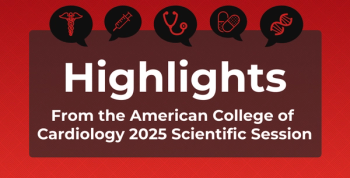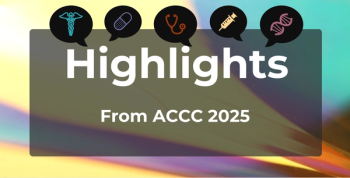
Study Finds Canagliflozin Can Reduce A1C at Lower Cost Than GLP-1 Drugs
Adherence may play a role in the real-world findings of the study, which was sponsored by Janssen.
An evaluation of electronic medical records finds that patients taking canagliflozin to manage their type 2 diabetes (T2D) can achieve significant, sustained reductions in their glycated hemoglobin (A1C) levels, on par with those seen in patients taking an injected therapy that costs more.
The study, which appears in Endocrine Practice, compared records of patients taking the 300 mg dose of the sodium glucose co-transporter-2 (SGLT2) inhibitor canagliflozin, an oral therapy sold by Janssen as Invokana, with patients taking glucagon-like peptide-1 (GLP-1) receptor agonists, which thus far are only available in injected formulations, although a tablet is being studied.
Canagliflozin is less expensive than the GLP-1 receptor agonist class, costing $3326 less for 12 months, according to the study. A statement from Janssen, which funded the study, said canagliflozin costs 40% less than GLP-1 medications, based on wholesale acquisition costs of $4767 for canagliflozin and $8093 for GLP-1 therapies.
Both patient groups saw their A1C levels drop after 3 months and remain lower after 30 months, according to the study; results were consistent after 3 months for patients at varying levels of glycemic control at baseline:
- Among those who started with A1C ≥ 7% patients taking canagliflozin saw their A1C drop 1.16%, and those taking GLP-1 receptor agonists dropped 1.21%
- Among those who started with A1C ≥ 8%, patients taking canagliflozin saw their A1C drop 1.54%, and those taking GLP-1 receptor agonists dropped 1.51%
- Among those who started with A1C ≥ 9%, saw their A1C drop 2.13%, and those taking GLP-1 receptor agonists dropped 1.99%
Researchers reported that after the 3-month mark, patients taking canagliflozin who started with A1C ≥ 7% had similar levels to those taking GLP-1 receptor agonists at each interval, except for the 9-month mark. Among those with A1C baseline levels ≥ 8% and ≥ 9%, patients taking canagliflozin had lower levels at 9 months, 27 months, and 30 months.
Patients were included in the study if they had been diagnosed with T2D and data were available for at least a year prior starting treatment with either canagliflozin or a GLP-1 receptor agonist. The study captured records of 11,435 patients taking canagliflozin and 11,582 patients taking GLP-1 receptor agonists between March 2012 and April 2016 from the IQVIA Real-World Electronic Medical Records US database.
Even though GLP-1s are often considered more powerful therapies than SGLT2 inhibitors, a separate
“The equivalent A1C control and weight loss seen with [canagliflozin] and injectable GLP-1s are important—and even somewhat unexpected given perceptions among some prescribers that GLP-1s perform better on these measures,” said Carol Wysham, MD, section head of the Department of Diabetes and Endocrinology at Rockwood Clinic in Spokane, Washington, who was the lead investigator on both studies. She said the findings, “are noteworthy for patients, physicians and payers.”
Reference
Wysham CH, Pilou D, Ingham M et al. HbA1C control and cost-effectiveness in patients with type 2 diabetes mellitus initiated on canagliflozin or a glucagon-life peptide 1 receptor agonist in a real-world setting. Endocr Pract 2017;24(3):273-286.
Newsletter
Stay ahead of policy, cost, and value—subscribe to AJMC for expert insights at the intersection of clinical care and health economics.












































